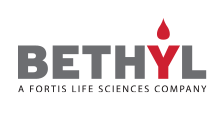Rabbit anti-cAbl IHC Antibody

Catalog #
cAbl
Human
ICC
,ICC-IF
,IHC
Rabbit
Polyclonal
Whole IgG
Between 850 and 900
IgG
Unconjugated
Antigen Affinity Purified
Product Details
Human
Monkey
Human
2 - 8 °C
1 year from date of receipt
c-Abl is the human cellular homolog of a the v-Abl viral oncogene. v-Abl was originally discovered as a mouse cell-derived sequence in the genome of the Abelson murine leukemia virus (A-MuLV), a transforming retrovirus isolated by the laboratory of Dr. H.T. Abelson. c-Abl is a tyrosine kinase from the Src-family of tyrosine kinases that localizes to both the cytoplasm and nucleus. It bears an SH2 (src-homology 2) and SH3 (src-homology 3) domain responsible for mediating c-Abl protein-protein interactions. c-Abl is implicated to play a role in multiple cellular processes such as cell cycle checkpoint signaling, apoptosis, cell differentiation, cell adhesion, and transcriptional regulation. Chromosomal translocations involving the c-Abl gene are associated with human leukemias.
Alternate Names
Abelson murine leukemia viral oncogene homolog 1; Abelson tyrosine-protein kinase 1; ABL; bcr/abl; bcr/c-abl oncogene protein; c-ABL; c-abl oncogene 1, receptor tyrosine kinase; c-ABL1; CHDSKM; JTK7; p150; proto-oncogene c-Abl; proto-oncogene tyrosine-protein kinase ABL1; tyrosine-protein kinase ABL1; v-abl; v-abl Abelson murine leukemia viral oncogene homolog 1
Applications

